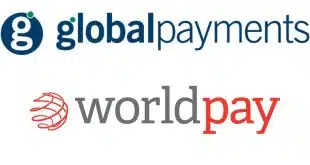The United States with its several thousand credit and debit card issuers and more than a dozen payment networks presents a stiff challenge to the card industry as it tries to convert from magnetic-stripe stripe cards to Europay-MasterCard-Visa (EMV) chip cards, two industry veterans told a group of independent sales organizations and merchant acquirers Wednesday.
EMV conversions have already happened in most industrial countries except the U.S., and even in the best of circumstances they require consumers and merchants to change familiar payment practices. “In terms of the consumer experience, it really is a turbulent ride for the first several months,” said Rod Hometh, senior vice president of business development at France-based point-of-sale terminal maker Ingenico S.A.’s U.S. operations. Hometh was a panelist at a session about the coming U.S. EMV conversion at the Northeast Acquirers Association (NEAA) annual conference in Boston.
Ingenico sells terminals throughout the world and has been through many EMV conversions. Hometh noted that the first EMV transaction occurred on an Ingenico terminal in the mid-1990s. Canada, where Ingenico has major operations, began its EMV conversion about four years ago.
The U.S. EMV conversion is about to get in high gear because the major payment card networks have designated October 2015 as the time when they will shift liability for counterfeit POS card transactions to the party that doesn’t support EMV. The liability shift has card issuers beginning to crank out chip cards in big numbers and merchants replacing old POS terminals with devices that read EMV cards.
The conversion will involve many more moving parts than the EMV changeovers in such countries as the United Kingdom and Canada, noted another panelist, Brett Chemaly, product manager of strategic alliances at Riverwoods, Ill.-based Discover Financial Services. Both of those countries’ payment systems are dominated by only a handful of financial institutions, and Canada has just one national debit network, Interac, Chemaly said. But the U.S., in addition to the four major general-purpose card networks, has three national PIN-debit networks and 13 regional ones. Chemaly is a veteran of two EMV conversions, having worked at MasterCard Inc. in the U.K. during its conversion about a decade ago, and later in Canada.
All of those players could make the U.S. transition to chip cards an especially tough job. In Canada, Hometh noted, “they were actually able to do an EMV beta test in the market.” Such a test would be “virtually impossible” in the U.S., he said. “I think it’s because there are many players and it’s so decentralized that any lessons taken would not be regarded as universally valid,” Hometh tells Digital Transactions News.
The “turbulent ride” Hometh mentioned mainly involves getting consumers used to entering PINs whereas before they signed for many transactions. Although many countries have adopted so-called chip-and-PIN authentication protocols that require the consumer to enter a personal identification number with all card transactions, most U.S. issuers plan to use chip-and-PIN only with debit cards. With credit cards, most issuers plan to use so-called chip-and-signature authentication.
Taking the chip-and-signature route will spar the industry from having to re-educate credit card holders, who are used to signing for purchases, but merchants are strongly pushing for chip-and-PIN across the board in order to enhance data security. “That still has to play out … we don’t know where the dice is going to land,” Chemaly said.
Hometh said consumers will come around and embrace chip cards, and in fact after a time become aware that EMV terminals offer greater data security than mag-stripe-only ones. “There is a window where consumers will look for merchants that are taking care of their security … and take a less than flattering view” of merchants that are not, he said.
Consumers and merchants might come around faster if there were stronger messages telling them about chip cards and why they’re valuable, according to the panelists. “I think the biggest sort of lesson we can learn is around customer education,” Chemaly said. He said the U.K. had a strong marketing campaign dubbed “I love chip-and-PIN” during its EMV conversion.
“You really couldn’t open the newspaper throughout the EMV migration and not see this full-page spread,” he said. “We’re not seeing that in the U.S. We’re not seeing a consolidated industry approach to educating the consumers, educating merchants.”





